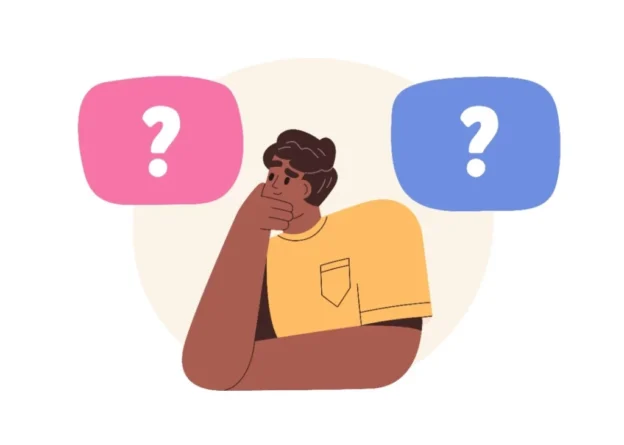Understanding the Differences Between CBT and DBT
In the realm of psychological therapy, there are numerous approaches that cater to a wide range of mental health concerns. Two methods that have gained significant attention in recent years are Cognitive Behavioral Therapy (CBT) and Dialectical Behavioral Therapy (DBT). While both therapies share certain similarities, they also possess distinctive features that make them effective tools for addressing various emotional and psychological challenges. At Centered Recovery Programs in Roswell, our licensed clinicians use these two techniques to help our clients gain valuable tools to use in their recovery. So, let’s talk about understanding the differences between CBT and DBT and how they can aid individuals in their therapeutic journey.
Cognitive Behavioral Therapy (CBT)
What is CBT?
Cognitive Behavioral Therapy (CBT) is a goal-oriented, time-limited therapeutic approach that focuses on the relationship between thoughts, emotions, and behaviors. CBT operates on the premise that our thoughts influence our feelings and actions, and by identifying and challenging negative thought patterns, individuals can change their emotional responses and behaviors. CBT is structured, typically occurring over a set number of sessions, and involves active collaboration between the therapist and the client.
How Does CBT Work?
CBT involves several key components:
- Identifying Negative Thought Patterns: Clients learn to recognize automatic negative thoughts that contribute to emotional distress.
- Challenging Cognitive Distortions: Clients work to challenge and reframe these distorted thoughts using evidence and alternative perspectives.
- Behavioral Strategies: Clients engage in behavioral experiments and learn coping skills to manage their emotions and behaviors.
- Homework Assignments: Between sessions, clients practice techniques and complete assignments to reinforce what they’re learning in therapy.
How Can CBT Help?
CBT is widely effective for various conditions, including anxiety disorders, depression, phobias, and post-traumatic stress disorder (PTSD). It equips individuals with tools to manage distressing emotions, modify negative thinking patterns, and develop healthier coping mechanisms. By fostering self-awareness and providing practical strategies, CBT empowers clients to take control of their thoughts and behaviors.
Dialectical Behavioral Therapy (DBT)
What is DBT?
Dialectical Behavioral Therapy (DBT) was initially developed to treat individuals with borderline personality disorder, but its effectiveness has extended to other conditions as well. DBT combines cognitive behavioral techniques with mindfulness practices and dialectical philosophy. The term “dialectical” refers to the balance between acceptance and change—a central tenet of DBT.
How Does DBT Work?
DBT consists of four key modules:
- Mindfulness: Focused on cultivating present-moment awareness to enhance emotional regulation and decrease reactivity.
- Distress Tolerance: Teaches individuals healthy ways to cope with intense emotions and tolerate distressing situations.
- Emotion Regulation: Aims to develop skills for managing and modulating emotions effectively.
- Interpersonal Effectiveness: Equips individuals with tools to enhance communication, set boundaries, and build healthy relationships.
How Can DBT Help?
DBT is particularly effective for individuals struggling with intense and difficult-to-control emotions, self-destructive behaviors, and challenges in interpersonal relationships. It emphasizes validation and acceptance of one’s emotions while simultaneously providing tools to change maladaptive behaviors and foster emotional regulation. This comprehensive approach helps individuals navigate emotional turmoil and build more stable, fulfilling lives.
Key Differences Between CBT and DBT
While CBT and DBT share the common goal of improving mental well-being, they differ in their approaches:
- Focus: CBT primarily centers on changing negative thought patterns, while DBT emphasizes accepting emotions as they are and developing skills to manage them.
- Inclusion of Mindfulness: DBT places a significant emphasis on mindfulness practices, which are not as central in traditional CBT.
- Scope: While CBT is broad and applicable to various conditions, DBT was initially developed for individuals with borderline personality disorder and other emotional dysregulation issues.
- Modules: DBT is structured around distinct modules (mindfulness, distress tolerance, emotion regulation, interpersonal effectiveness), whereas CBT follows a more flexible framework based on identifying and challenging thoughts.
Now that you have an understanding of the differences between CBT and DBT, it is clear that they both offer valuable tools for individuals seeking therapy. However, the choice between the two depends on the individual’s specific needs and challenges. Whether it’s tackling negative thinkin patterns with CBT or learning to manage intense emotions through mindfulness and dialectics in DBT, these therapeutic approaches provide practical strategies to navigate life’s challenges and promote psychological well-being. Consulting with a mental health professional can help determine which approach aligns best with an individual’s unique circumstances and goals, ultimately leading to a more fulfilling and balanced life. Get started today by calling Centered Recovery Programs at 800.556.2966!
Written by Jennifer Lopes, BS Psy






